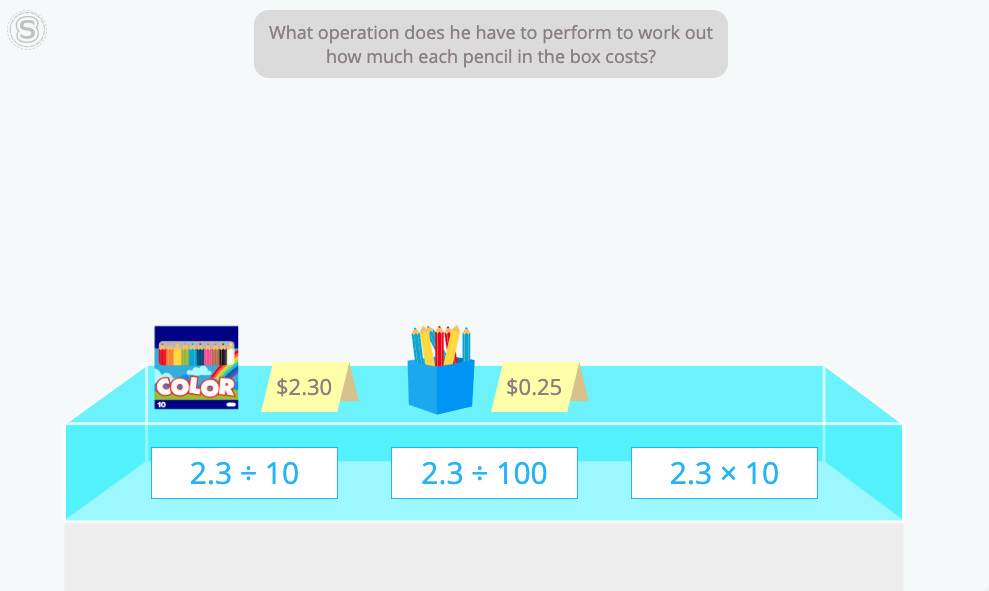Learn the Prime Numbers
With Ease
No more spending hours on rote memorization and repetitive worksheets. Smartick’s personalized math training method is designed to boost your child’s skills in a fraction of the time.
Learn How to Divide Decimals
With Ease
Decimals are an essential part of math, and learning how to divide them is an important skill. Whether you’re dividing candies among friends or solving math problems, understanding how to divide decimals will help you become a confident mathematician


No credit card required

No credit card required
Learn How to Divide Decimals with Smartick
What is a Decimal?
How to Divide Decimals?
Types of Decimals
FAQ on Dividing Decimals
What is a Decimal?
Before we start dividing decimals, let’s understand what they are. Decimal numbers are a way of representing parts of a whole. They include a decimal point and digits after the point. For example, 0.5, 3.75, and 2.9 are decimal numbers. The decimal point separates the whole number part from the fractional part. Each digit to the right of the decimal point has a specific place value, such as tenths, hundredths, thousandths, and so on.
How to Divide Decimals?

Dividing decimals might sound tricky, but it’s quite straightforward once you understand the process. Here are the steps to follow:
Step 1: Set up the division problem as you would with whole numbers. Write the dividend (the number being divided) inside the long division symbol and the divisor (the number you’re dividing by) outside the symbol.
Step 2: If the divisor is not a decimal, skip to Step 3. However, if the divisor is a decimal, move the decimal point to the right until it becomes a whole number. Then, move the decimal point in the dividend the same number of places to the right.
Step 3: Begin dividing the numbers, starting from the left. Divide the first digit of the dividend by the divisor and write the quotient above the division symbol.
Step 4: Multiply the divisor by the quotient you obtained in Step 3. Write the product below the dividend and subtract it from the dividend.
Step 5: Bring down the next digit of the dividend and continue dividing. Repeat Steps 3 and 4 until you have divided all the digits.
Step 6: If the dividend is fully divided, your answer is the quotient. However, if the division does not result in a whole number, you can add zeros after the decimal point in the dividend and continue dividing until you reach the desired level of precision.
FAQ on Dividing Decimals
Q1: Can decimals be divided without a remainder?
A1: Yes, decimals can be divided without a remainder. In such cases, the result is a whole number.
Q2: What if the dividend has fewer digits than the divisor after the decimal point?
A2: If the dividend has fewer digits, you can add zeros after the decimal point until the number of digits matches the divisor.
Q3: Is there a shortcut to divide decimals?
A3: Dividing decimals requires following the steps systematically. However, with practice, you will become faster and more efficient.
